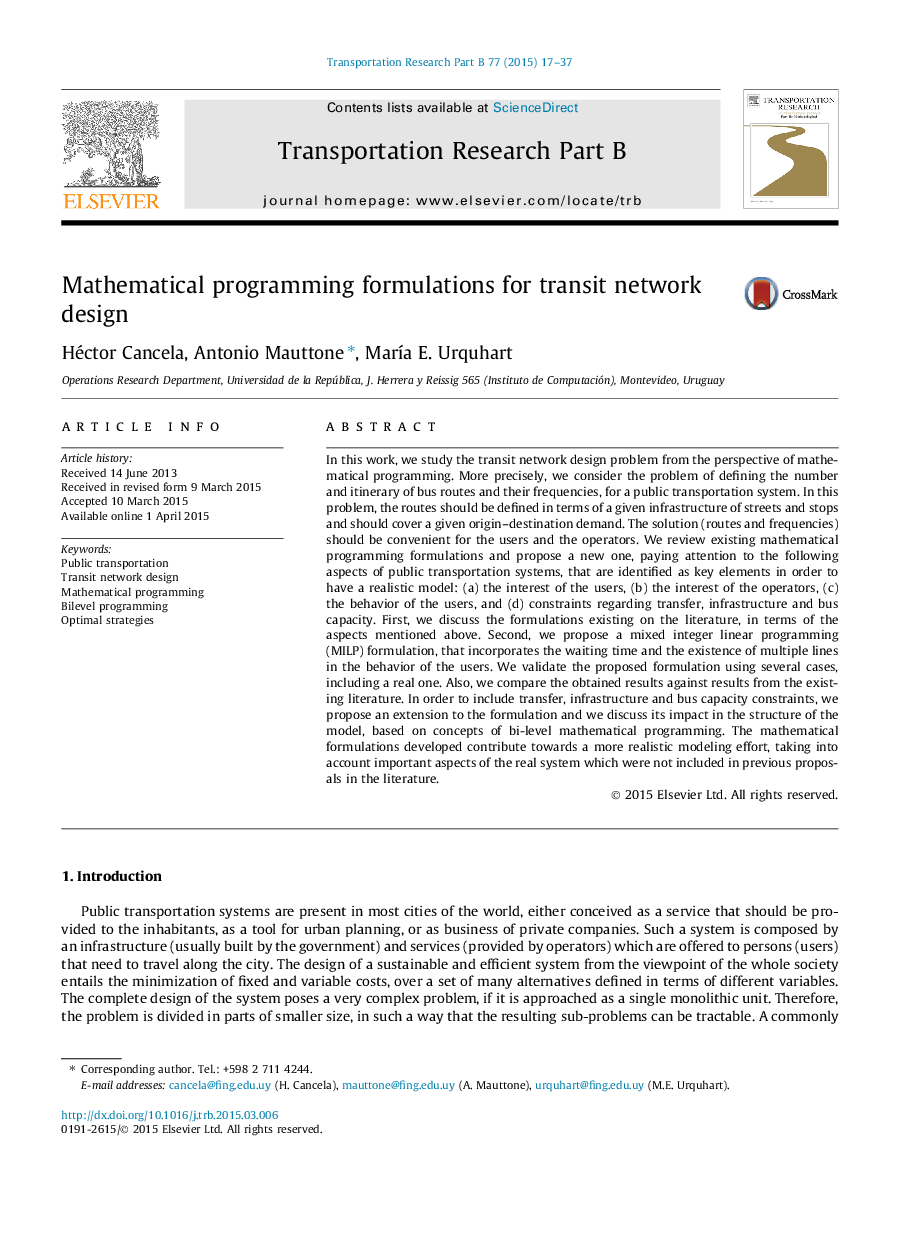| کد مقاله | کد نشریه | سال انتشار | مقاله انگلیسی | نسخه تمام متن |
|---|---|---|---|---|
| 1131832 | 1488966 | 2015 | 21 صفحه PDF | دانلود رایگان |
• We consider several aspects of transit systems, which have not been jointly modeled.
• We review existing formulations, discussing the treatment of such aspects.
• We propose a new mixed integer linear formulation.
• We discuss the impact of adding new aspects, on the mathematical structure.
• Numerical applications show the contribution of the proposal.
In this work, we study the transit network design problem from the perspective of mathematical programming. More precisely, we consider the problem of defining the number and itinerary of bus routes and their frequencies, for a public transportation system. In this problem, the routes should be defined in terms of a given infrastructure of streets and stops and should cover a given origin–destination demand. The solution (routes and frequencies) should be convenient for the users and the operators. We review existing mathematical programming formulations and propose a new one, paying attention to the following aspects of public transportation systems, that are identified as key elements in order to have a realistic model: (a) the interest of the users, (b) the interest of the operators, (c) the behavior of the users, and (d) constraints regarding transfer, infrastructure and bus capacity. First, we discuss the formulations existing on the literature, in terms of the aspects mentioned above. Second, we propose a mixed integer linear programming (MILP) formulation, that incorporates the waiting time and the existence of multiple lines in the behavior of the users. We validate the proposed formulation using several cases, including a real one. Also, we compare the obtained results against results from the existing literature. In order to include transfer, infrastructure and bus capacity constraints, we propose an extension to the formulation and we discuss its impact in the structure of the model, based on concepts of bi-level mathematical programming. The mathematical formulations developed contribute towards a more realistic modeling effort, taking into account important aspects of the real system which were not included in previous proposals in the literature.
Journal: Transportation Research Part B: Methodological - Volume 77, July 2015, Pages 17–37
